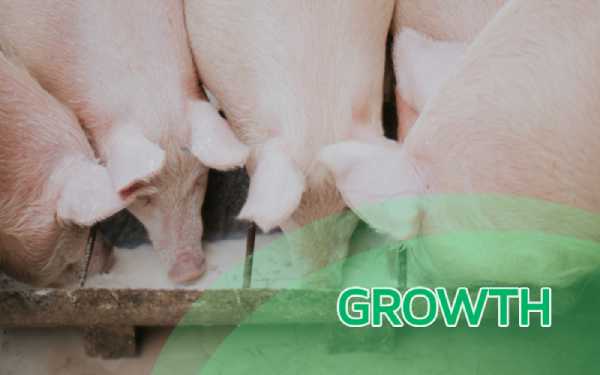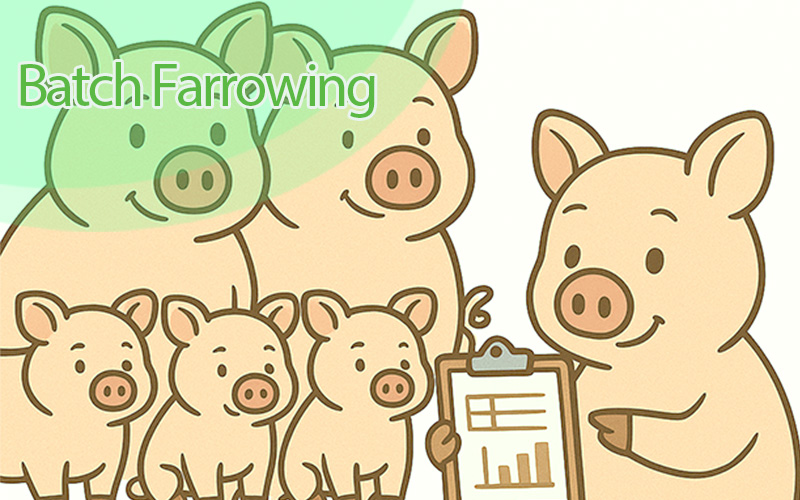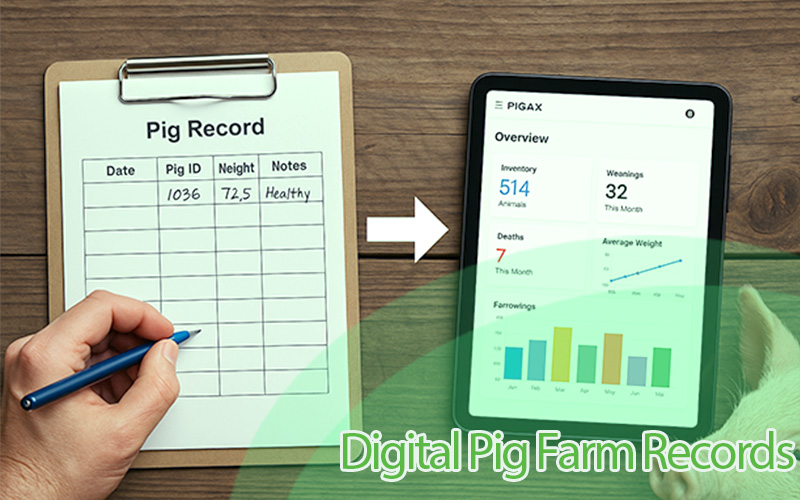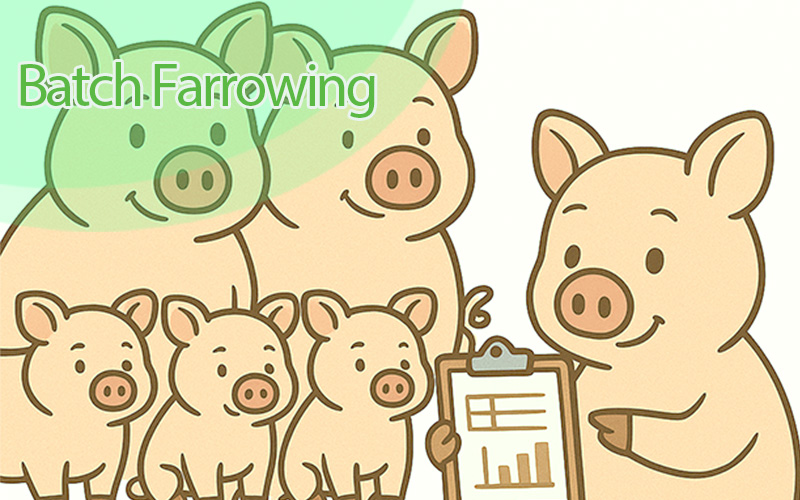4 secrets that will boost the growth of your Pigs
The growth rate of pigs is an important factor in pig farming because it can impact the amount of meat that farmers produce. Faster-growing pigs will reach market weight more quickly, which can result in lower production costs and higher profits for pig farmers. As a pig farmer, you must focus on feeding and caring for your pigs in a way that promotes healthy and efficient growth.
A simple and logical way to make your pigs gain weight and grow faster will be feeding them regularly. But regular feeding is not the only factor responsible for a pig’s growth and development, especially when you are not using the right quality ingredients. Let us go through the four (4) factors that hold the secret to faster growth in pigs.
feeding is not the only factor responsible for a pig’s growth and development, especially when you are not using the right quality ingredients. Let us go through the four (4) factors that hold the secret to faster growth in pigs.
Quality Feeding
Quality feeding is not just regular feeding. It is feeding containing all the necessary ingredients for pig’s growth, in their right proportion, and is delivered at the right time Pigs have a high metabolism and require a diet that is high in protein and energy to support their growth.
Quality feed in its right proportion and combination will enhance the growth and performance of pigs. For example, combining a soybean meal with a corn diet has provided pigs with well-balanced amino acid levels that are important for growth. Give your pigs feed that is moderate in fiber because fiber takes more energy to digest, so the pig will end up expending more calories when overeating fiber.
You must note that the nutritional needs of pigs vary depending on their age and stage of growth. For example, piglets have a higher protein requirement than adult pigs, and the nutritional needs of pigs during the finishing phase, when they are being prepared for market, may be different than the needs of pigs at other stages of growth. It is important to consider the age and stage of growth of pigs when planning their diet and make adjustments as needed to ensure that they are receiving the nutrients they need to thrive.
Pigs also require a consistent supply of clean water to support their growth and development. It is important to monitor the water intake of pigs and ensure that they have access to clean and fresh water at all times.
For efficient growth, pig feed must contain the following key nutrients:
-
Protein: Protein is essential for muscle development and the repair and maintenance of tissues. Sources of this include soybean, fish meal, bone meal, etc.
-
Carbohydrates: This is important for energy in pigs. Sources of energy for pigs include corn and barley.
-
Vitamins: These include vitamins A, D, E, and K, as well as the B-complex vitamins
-
Minerals: These include calcium, phosphorus, and trace minerals such as copper, zinc, and selenium. It is important to provide a diet that includes a good balance of these minerals.
Genetics
Genetics can play a significant role in the growth and development of pigs. Some pigs may have genetic traits that result in faster growth or a higher lean meat percentage, while others may have traits that result in slower growth or a lower lean meat percentage.
Selecting pigs with desired traits, such as growth rate and lean meat percentage, can help improve the overall growth and development of the herd. This can be achieved through careful genetic selection and breeding practices. It is important to work with a reputable genetic supplier and use careful selection criteria to ensure the long-term success of the herd.
To get the best results from genetics in your pig farm, you can select from the 5 best commercial breeds for successful pig farming. However, it is important to note that genetics is just one factor that can impact the growth and development of pigs. Other factors, such as nutrition, disease, stress, and management practices, can also play a role. It is important to consider all of these factors when working to boost the growth of pigs.
Health status
A Pigs health can have a significant impact on its growth and development, good health can promote faster growth and development. When pigs are healthy, they eat more which converts into added weight. But sick pigs won’t have enough appetite to eat and even if they do, it doesn’t translate to weight because the body is fighting off infection or disease affecting it. So to maintain the growth of your pigs, always monitor their health status, and observe for signs and behaviors that indicate poor health like isolation, pale skin, or watery stools. Once diseases are detected early, pigs' growth is less hampered.
Viral diseases like PRRS and PED can negatively affect pigs' growth as well as the entire pig farm operation. A more proactive measure is needed to tackle problems like this. As a pig farmer, you should know the 7 best practices to fight major viral diseases that affect pigs in order to efficiently prevent or handle disease outbreaks in your pig farms.
Regular vaccination and deworming also help maintain the health and stability of pigs. Deworming can have a positive effect on pig growth by eliminating or reducing the burden of parasitic worms in the pig's digestive system. When pigs are infected with parasitic worms, such as roundworms, tapeworms, or nodular worms, they can experience reduced appetite, malnutrition, and weight loss. This can lead to slower growth and poorer overall health. By deworming the pigs, you can help to improve their digestive function and nutrient absorption, which can lead to increased weight gain and better overall health.
It is important to follow a regular deworming schedule and use appropriate deworming medications to effectively control parasitic worms in pigs. Consult with a veterinarian or pig production specialist for guidance on the best deworming practices for your specific operation.
Environmental factors
This focus on the environmental condition where the pig is located and includes temperature, hygiene, and space requirement.
The temperature of the pig pen has to be moderate at all times because, at lower temperatures, pigs may have a reduced appetite and metabolism, which can slow their growth. On the other hand, high temperatures can lead to heat stress, which can also reduce appetite and metabolism, leading to slower growth. Apart from affecting appetite and metabolism, extreme temperatures, either hot or cold, can also weaken a pig's immune system, making them more susceptible to diseases and infections, which can further slow its growth.
Pigs are most comfortable at temperatures between 15 and 20 degrees Celsius (60-68 degrees Fahrenheit). This can be achieved through proper ventilation, and insulation, as well as providing pigs with access to fresh water to help regulate their body temperature.
Also, avoid overcrowding pigs into one pen, Pigs that are given enough space to move around and engage in natural behaviors may grow more quickly and efficiently than pigs that are cramped or restricted in their movement. This is because they can easily access feed and water which supports their growth.
Never neglect any of the four factors above. All of these factors need to be in place for you to achieve added weight and optimal growth for your pigs. You must also be able to track the weight of your pigs to ensure you are getting the expected results. You can track your pig's growth using the pigax pig management tool made for pig farmers who are determined to succeed. It even has a free plan for pig farmers that are just starting and are running on a very strict budget.




